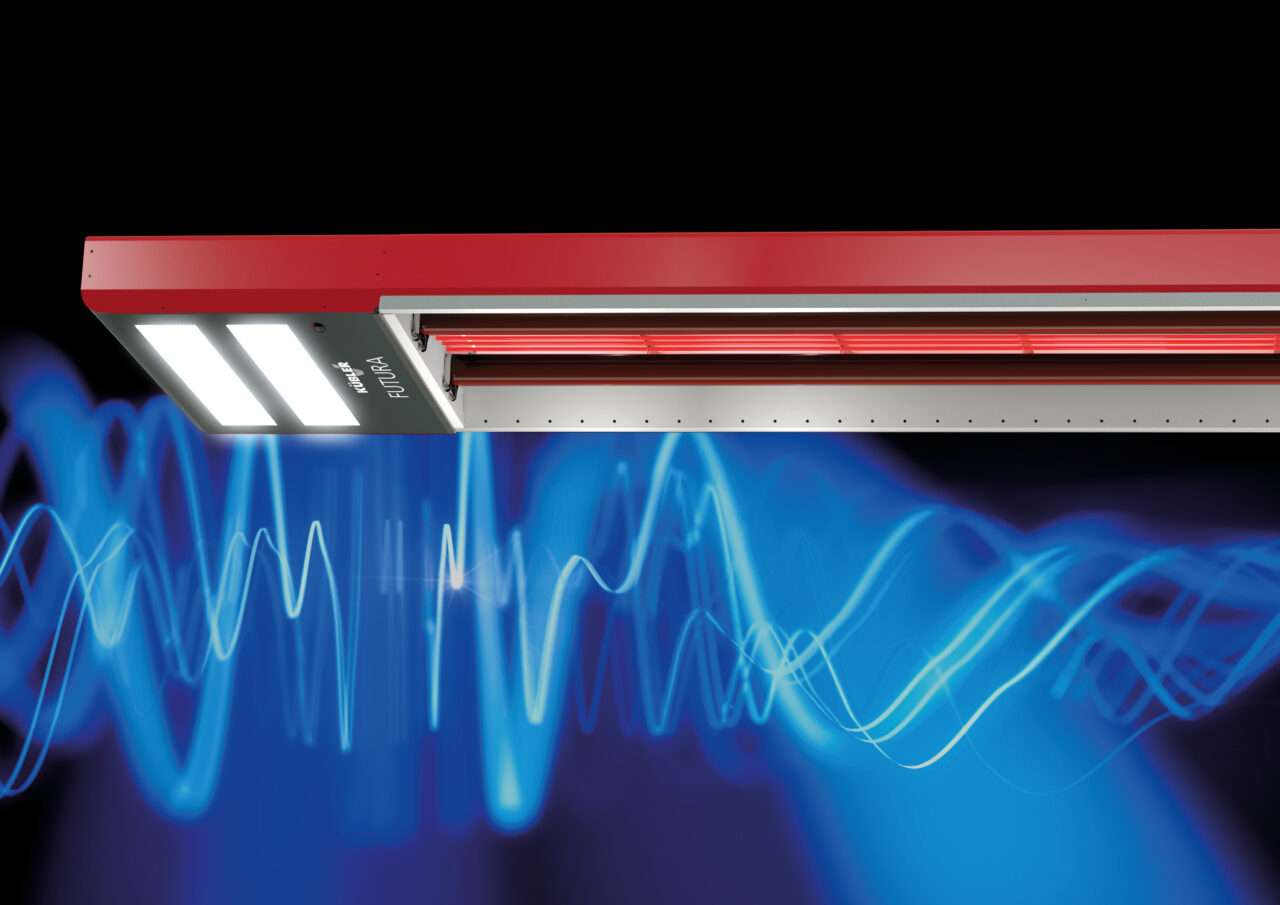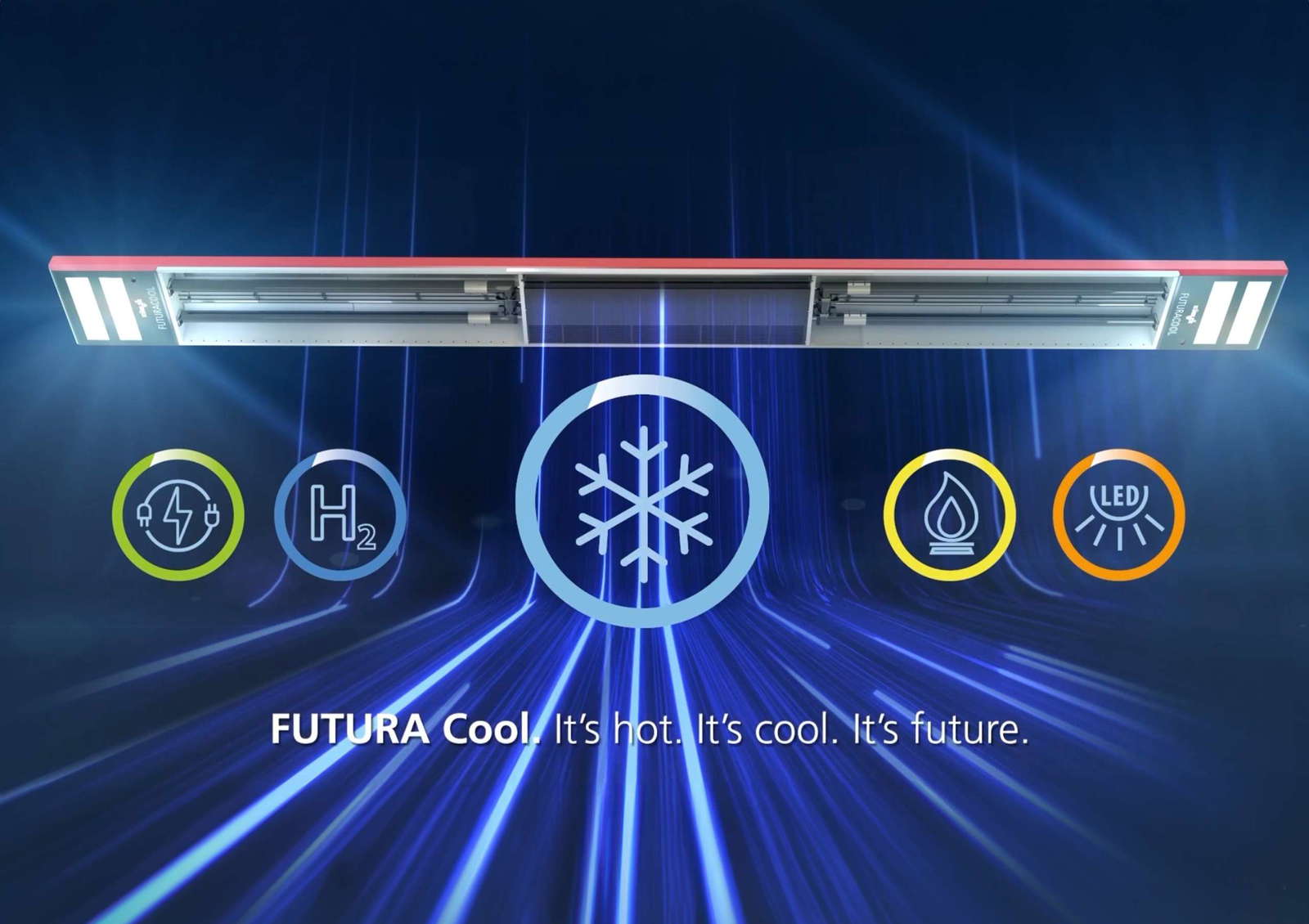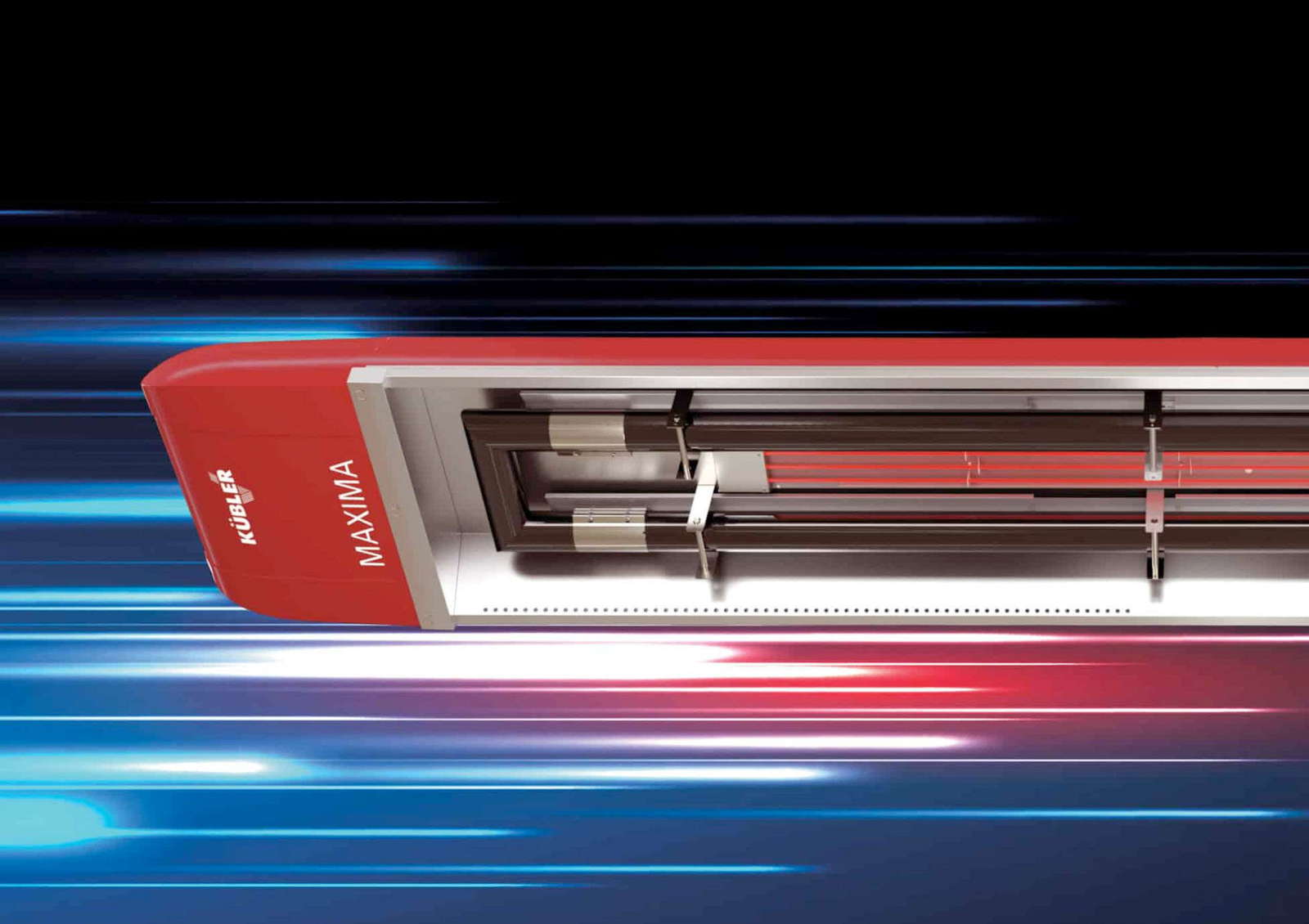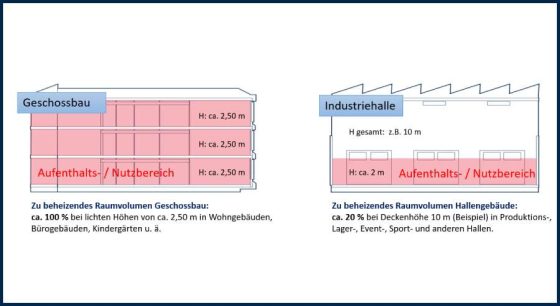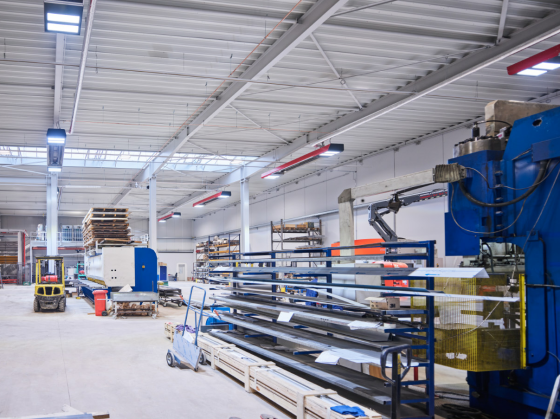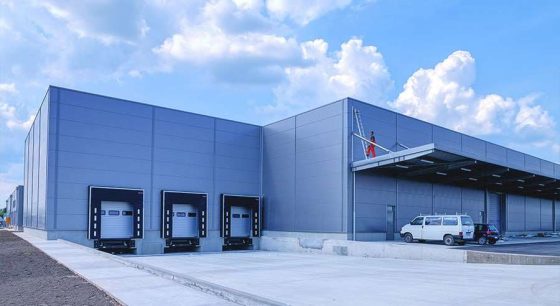Condensing boiler technology makes high savings potential available in companies

Condensing technology converts waste heat into usable energy
The special feature of condensing boiler technology is that it extracts the condensation heat (called calorific value) from the waste heat of heating systems, makes this energy content usable and thus significantly increases the overall efficiency of the systems. Depending on the fuel, this is referred to as oil or gas condensing technology. In short, condensing boiler technology is characterized by the fact that it increases the degree of energy utilization and thus energy efficiency.
How waste heat recovery with condensing boiler technology works
The functional principle of condensing boiler technology is basically very simple. Using infrared heating as an example, the energy contained in the exhaust gas is cooled down to the point of condensation and the heat obtained is transferred to a storage medium (usually water). The heated water is fed to a buffer tank and from there, depending on demand, fed into a standard pumped hot water heating network. Water is ideally suited as a storage medium, but other media such as air can also be used and made usable in hot air blowers, for example.
Start by identifying and reducing your sources of waste heat
It is not only heating systems that generate waste heat; depending on the operating mode, waste heat is generated in a wide variety of places. Ovens, machines (especially air compressors), cooling systems and/or uninsulated pipes are probably the classics. Get to the bottom of the causes of unused waste heat by thoroughly analyzing and evaluating energy consumption throughout the company. It is then important to avoid or at least reduce unnecessary waste heat by optimizing processes. The following questions will help you do this:
- Can you avoid idle time?
- Are all systems/processes really running efficiently, or is there still room for improvement here and there?
- Are some processes perhaps oversized?
- Are there any heating or cooling phases that would not be necessary in practice?
- Do you maintain your machines and systems regularly?
- Are you insulating sufficiently?
With a comprehensive analysis, you can already save a lot of waste heat. And the rest? It's best to use it sensibly, depending on your requirements.
Use the energy gained from condensing boiler technology sensibly
The practical thing about condensing boiler technology is that you can use the waste heat in a variety of ways for greater energy efficiency in your company. "Hybrid heating" is an important keyword here. After all, waste heat can play a major role in hot water preparation or heating rooms. While this variant of waste heat utilization has already established itself in many private households, it is still far from being used everywhere for heating hall buildings. Yet this building segment in particular has a reputation for consuming a lot of energy due to the dimensions of its rooms. There is great potential for savings here. In the industrial sector, for example, the recovered energy can be used for domestic hot water or for hot water-based (hybrid) heating. This often makes sense for offices or social rooms, which are typically connected to halls. In the sports sector, hot water is often used in sanitary facilities, especially for shower rooms. Where appropriate, hot air can be used via hot air blowers to supplement energy-efficient infrared heating.
Bundle your energy flows for greater energy efficiency
Not only the waste heat from heating systems can be harnessed, numerous other heat flows in the hall building also offer interesting, efficiency-enhancing potential. Namely when you intelligently combine condensing boiler technology and heating. One example is the H.Y.B.R.I.D. infrared heating system from the Ludwigshafen-based hall heating specialist KÜBLER. The fully integrated solution offers great flexibility in the integration of different technologies and energy sources. For example, the hybrid system can utilize the energy flows from the process (machines, compressors, etc.) at the same time as the waste heat from the heating system. At a textile machinery manufacturer from North Rhine-Westphalia, the energy flows from the heating system, curing ovens and compressors were combined in this way. Since then, the heat requirement of 1,200 m² of office space can be completely covered by the residual heat utilization.
There are also numerous other possible combinations. What is particularly interesting in view of the usually large roof areas of industrial halls is that the hybrid system, which has won several awards (including "Germany's most sustainable product", German Sustainability Award 2012), can also integrate renewable energies such as solar thermal energy (keyword: Helio.B.R.I.D.). Heat pumps can also be integrated. In addition, the hybrid system is the basis for the implementation of digital hall heating (e.g. WÄRME 4.0), which makes it possible, among other things, to continuously run the system on an ideal line through real-time monitoring of current consumption. The combination of condensing boiler technology and energy-saving heating technology therefore allows you to ensure greater energy efficiency in your company in a variety of ways.
Why you should focus on your company and climate targets at the same time
Only around half of German companies are aware of their waste heat potential - as dena writes in its publication on waste heat utilization as part of the EnergyEfficiency Initiative2 . This means that an estimated 226 TWh of usable heat goes unused every year. That is 36 % of the energy used by the entire manufacturing industry. Clearly, this costs companies an enormous amount of money, but at the same time the unused waste heat has a negative impact on the environment. Around 60 million tons of the greenhouse gas CO2 are unnecessarily released into the atmosphere every year. In view of rising energy costs and climate protection targets, companies simply can no longer afford to do this.
Make environmental protection your profitability measure
The fact that waste heat recovery with condensing boiler technology is achieved with virtually no additional consumption costs should be of great interest to many hall operators. Overall, up to 15 percent of heat can be recovered and utilized thanks to the integrated KÜBLER residual heat recovery in the hybrid system. Thomas Kübler, founder and managing partner of KÜBLER GmbH Energiesparende Hallenheizungen: "This figure, in addition to our already extremely energy-efficient infrared systems, marks a quantum leap in economical and environmentally friendly hall heating. Energy savings of up to 70 percent* can be realized in the overall system."
* Compared to conventional technologies
How the combination of condensing boiler technology and IR heating pays off in practice
Practical examples show how these values pay off for hall operators. By around 65 %, the CO2-emissions were reduced by modernizing the heating system with the KÜBLER H.Y.B.R.I.D. system in a production hall of the AZO Group in Osterburken. Specifically, from approx. 226,400 kg p.a. to approx. 79,800 kg annually. Greater energy efficiency was also the focus at Reiners + Fürst. The energy savings achieved by the textile machinery manufacturer during the energy-efficient refurbishment of its production and storage areas were also around 65 %. Specifically, the savings here amount to around 46,5000 euros and 299 tons of CO2-emissions per year. By the way: Reiners + Fürst was awarded first place in the Energy Masters Award in the buildings category in 2014 for the refurbishment of the hall heating system and the integration of residual heat utilization for hall heating, compressed air and hardening furnace in the H.Y.B.R.I.D. system.
The bottom line: hybrid heating with condensing boiler technology pays off - especially financially!
Using less energy to generate heat saves money. That is crystal clear. How this translates into concrete figures depends on various factors, such as
- Type and size of your company
- The volume to be heated
- The number of processes that generate waste heat
- The heating you use
Conclusion: Optimization potential can be found in many different places
Hall modernization, proper insulation, highly efficient heating systems, condensing boiler technology and other options for modern waste heat recovery: there are many ways to increase the energy efficiency of your business and reduce costs. Feel free to contact us and let us discuss how you can use the waste heat from your heating and production processes sensibly instead of disposing of it unused through the chimney.
1 Weblink: https://www.dena.de/themen-projekte/energieeffizienz/
2 Cf. 1445_Brochure_Utilization_of_Waste_Heat.pdf (dena.de)
-
How is energy used correctly? What does efficiency mean? In the German government's current energy policy, there is a huge gap between aspiration and reality. After all, industrial buildings are not treated as industrial buildings because they only account for two percent of buildings - even though they are responsible for 15 percent of greenhouse gas emissions. The latter has not played a role to date. Behind this two percent are 420,000 to 480,000 hall buildings that are used in industry, commerce and municipalities as production halls, logistics halls, workshops, sports halls or sales outlets. A small number that is responsible for a significant proportion of energy consumption and GHG emissions in Germany.
-
Ambitious climate protection targets and new building energy regulations pose challenges for companies. Especially when modernizing heating systems in hall buildings, you should rely on future technologies in order to meet the strict requirements.
-
The metalworking company "Die Kanter & und Schlosser" heats its new building variably with electricity, hydrogen or gas thanks to the world innovation from KÜBLER in Ludwigshafen.
-
Not only politicians have pulled the ripcord, many companies are also planning to extend the Christmas break and shut down operations at least until the second week of January. Machines will be at a standstill for weeks and the doors to the factory buildings will remain closed.
